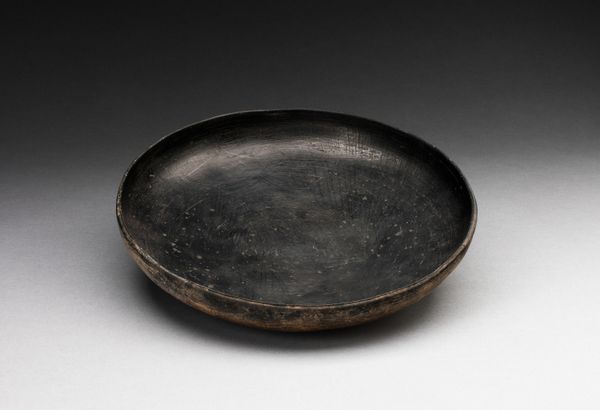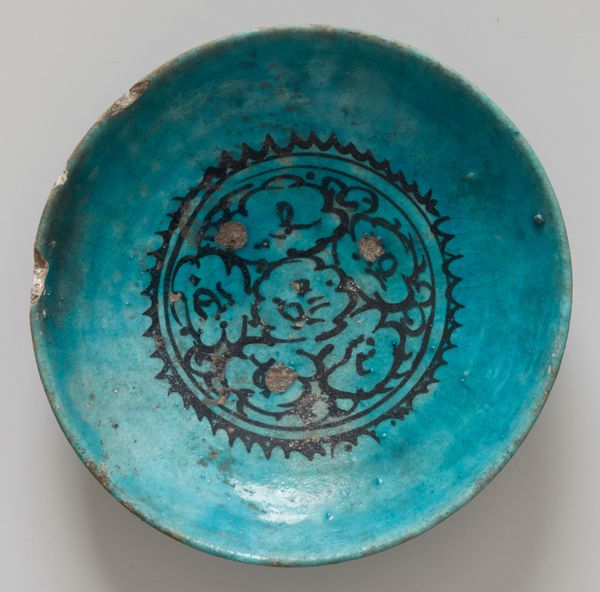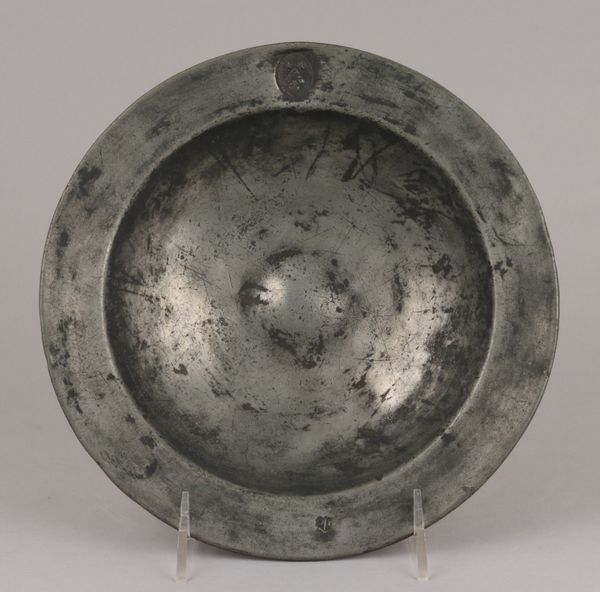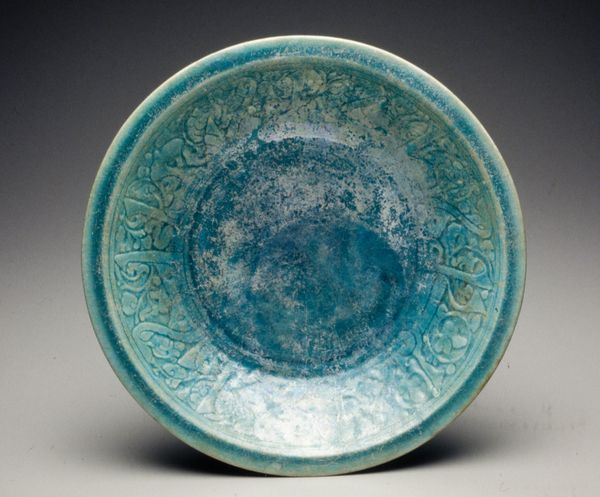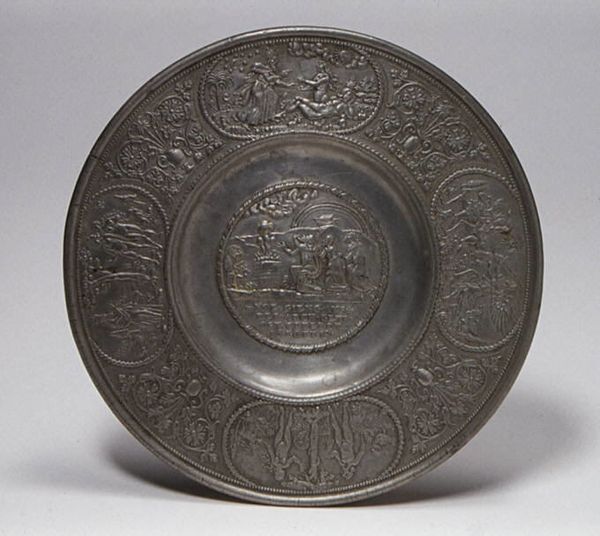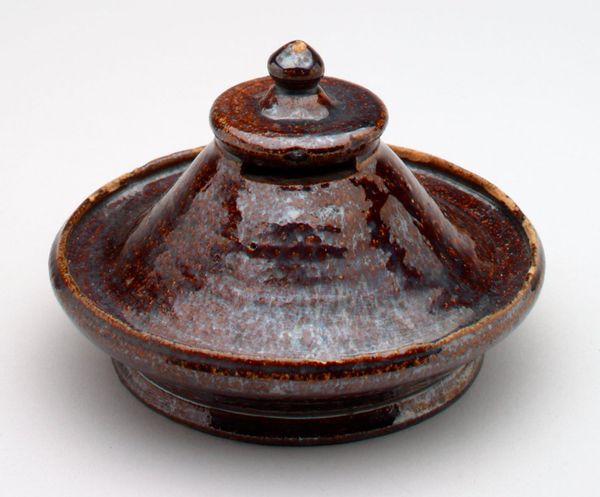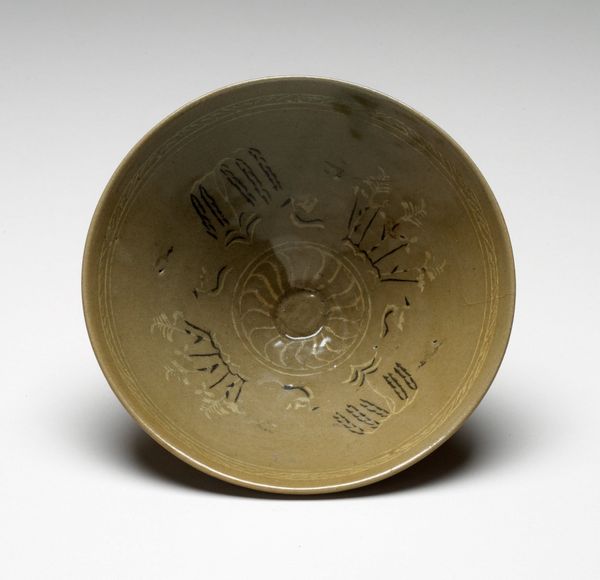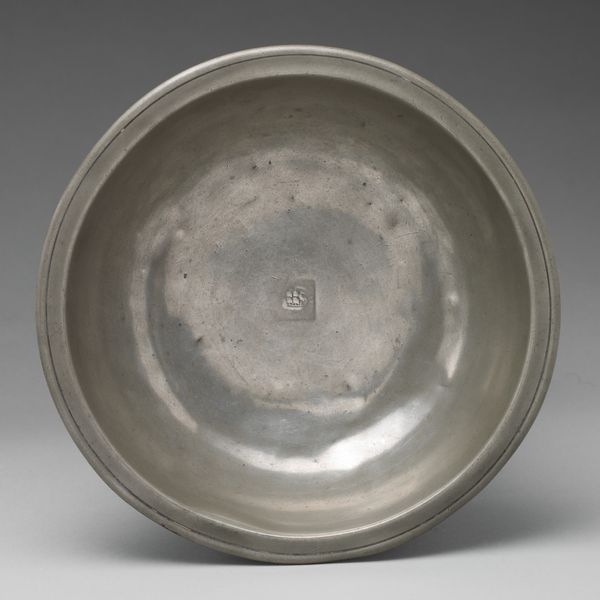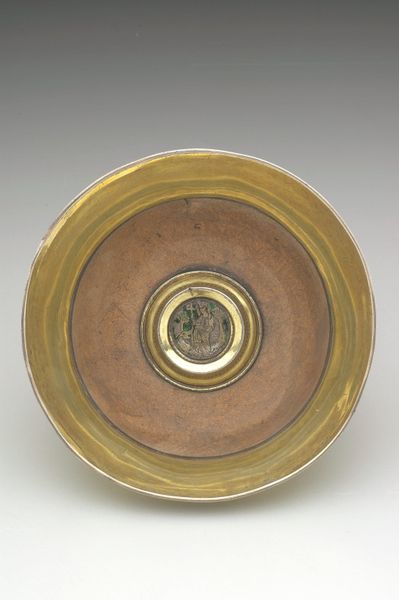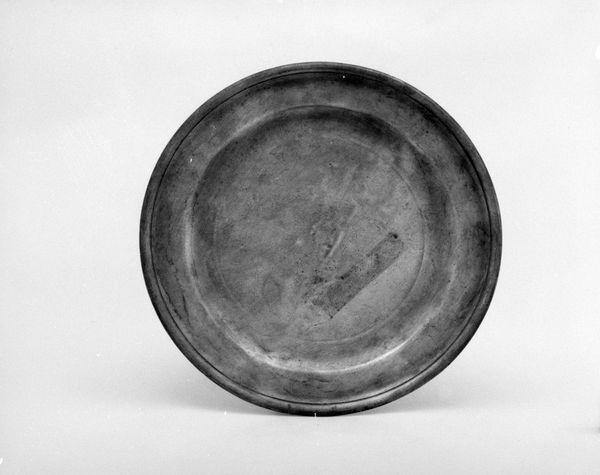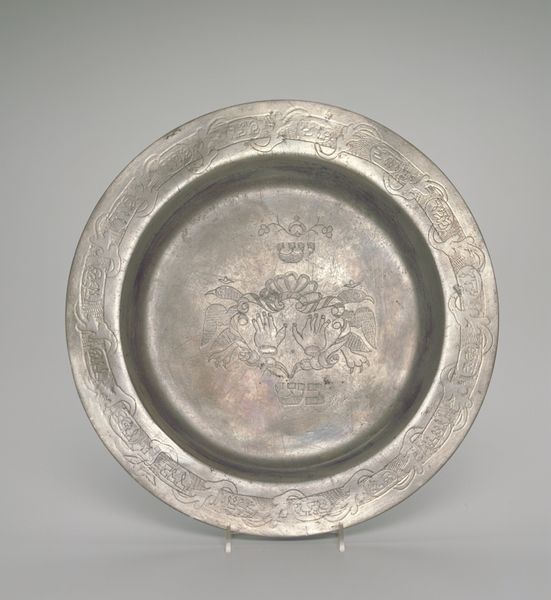
relief, ceramic, earthenware, sculpture
#
art-nouveau
#
relief
#
ceramic
#
earthenware
#
stoneware
#
geometric
#
sculpture
#
ceramic
#
earthenware
#
decorative-art
Copyright: No Known Copyright
Curator: What immediately strikes me is the tension in this bowl, the balance between menace and preciousness. Editor: That's intriguing! It's a compelling piece, this earthenware bowl. It’s titled "Bowl" and created around 1906 by Ludwig Vierthaler. Currently, it resides here at the Minneapolis Institute of Art. What do you make of the materiality? Curator: The texture is the thing; that mottled, pitted surface is incredibly tactile, inviting touch. The eye is drawn to that dark area up top where the relief sits. It almost resembles a stylized sea creature or maybe a grotesque spider. And then that central mother-of-pearl piece-- the raw material choice strikes a strangely sinister glamour against the earthenware. Editor: Absolutely. It is a stoneware bowl, in the Art Nouveau style. The period embraced the idea of the Gesamtkunstwerk, or total work of art, where art and craft merged seamlessly. How does that idea resonate with you when considering its symbolism? Curator: Well, look at the circular form itself. Bowls are traditionally associated with nourishment, nurturing, and femininity, all very conventional ideas. Yet here, that life-giving form is violated by that spider-like form. It makes the viewer uneasy, contrasting with the lustrous mother-of-pearl; are those eggs, or simply decorative details? Vierthaler deliberately toys with familiar archetypes, making us question them. It feels potent with conflicting emotions. Editor: And I’m particularly interested in how Vienrthaler used an industrialized firing process but retained a handcrafted aesthetic. The minute indentations forming the base really invite viewers to imagine its construction process. It transcends the purely functional; we begin to examine decorative art that served little functional purpose. Curator: True. So this bowl really captures something potent. A sense of dread mingling with beauty... quite the artifact. Editor: Indeed. Vierthaler pushes us to rethink not only what we consider “art” versus “craft,” but the psychological depth objects can possess.
Comments
minneapolisinstituteofart almost 2 years ago
⋮
Today, Vierthaler is best known for the extraordinary colorations found in his copperware which create an atmospheric backdrop for surface elements based on underwater plant and sealife forms. In this aquatic scene, a crab-like creature occupies one side while the arms of another curl around the opposite edge, leaving the center free for the artist's famous painterly effects. Winhardt & Co.'s patinations were sold under the registered trademark EOSIN, but it was Vierthaler who created them.
Join the conversation
Join millions of artists and users on Artera today and experience the ultimate creative platform.
